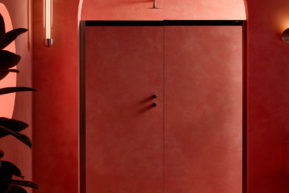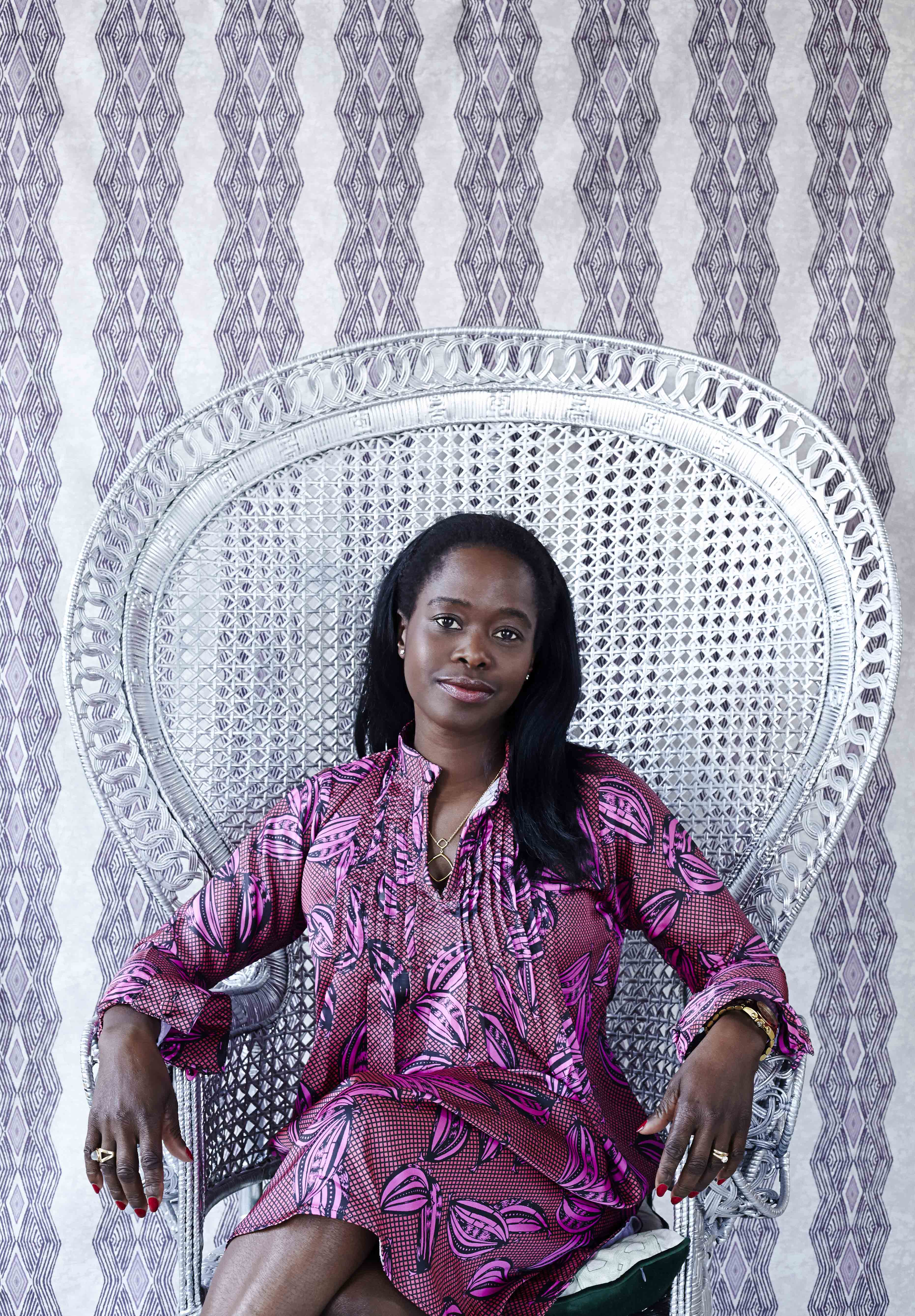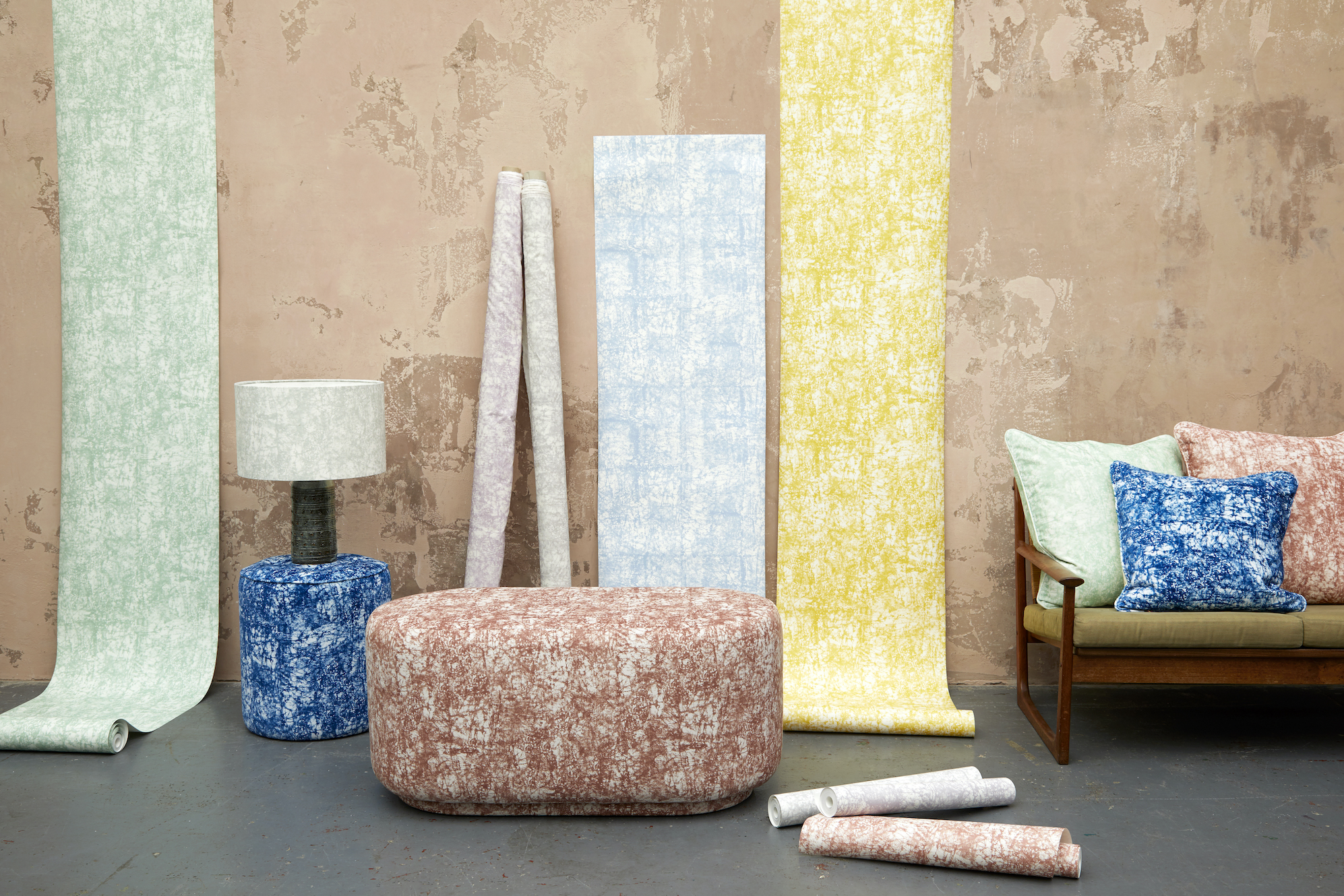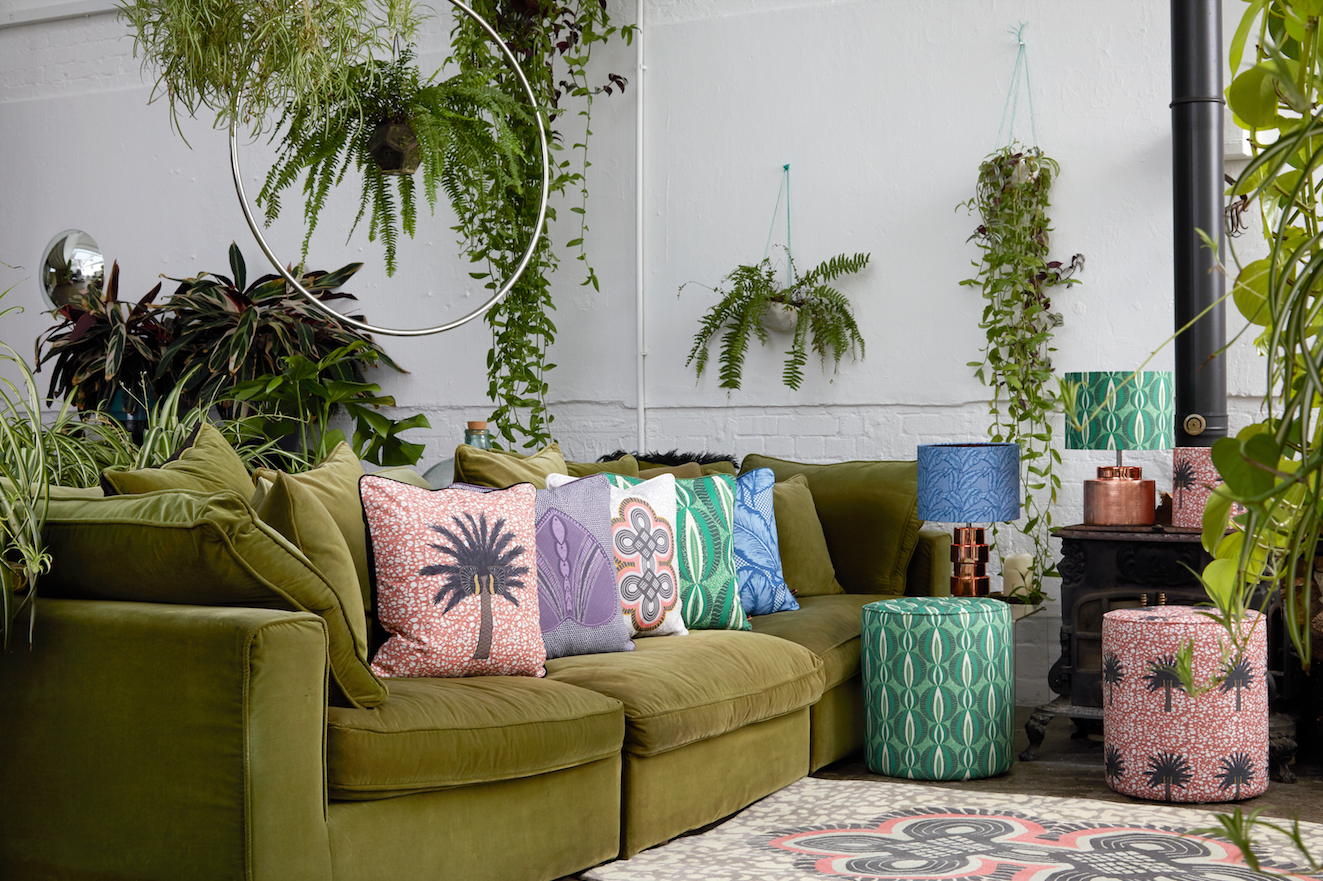I have a lot of ideas and images stored in my mental memory, but getting the colour combinations right, takes me some time.
How did you start out in design?
My start in textile design was an accident. Or maybe I should call it, I spotted a gap in the market.
My background is in print and broadcast journalism and I worked for many years as fashion editor for German Elle here in London.
When I moved homes I was looking for items to decorate our flat that represented me – something colourful with a luxury African feel. I didn’t find anything that suited me, so I took things into my own hands and started a small capsule collection of cushions.
Very soon someone who knew a buyer at Liberty got hold of the collection and within a short while my cushions were stocked in Liberty. Selfridges followed a few weeks later and then Fenwick of Bond Street came on board. That’s when I knew that there is serious potential for an African-inspired design brand and I quit my job to dedicate myself fully to the brand. And we are now going stronger than ever after 15 years in business.
What inspires you?
I am inspired by the way of life and energy in west Africa, the colours and patterns, the history and the people.
Do you work from your own studio space?
Yes, I have a studio in North London with the most amazing view of London.
What is the job of design in this current world we live in?
Design should inspire and make people happy; an integral part of life.
I am very good at taking my well-deserved “me-time”, whenever I feel and need it. This is the only way to keep going and pivoting as a businesswoman.
How does your design process work?
My process is quite structured. I usually always start with a story or theme I am building the collection around. Often this is a place that I like or anything that inspires me.
I then set out the colours and colour combinations I want to work with in my collection.
Once this is set up, I hand-sketch my designs with a pencil on paper. And once I am happy with that, everything gets scanned and the colours and design details are adjusted in Photoshop.
How do you connect with colour/materials?
Colours are at the core of my design work and are usually the hardest part to get right. I can design very quickly, as I have a lot of ideas and images stored in my mental memory, but getting the colour combinations right, takes me some time. Especially as I feel so particular about it and have to get it absolutely right.
What do you do to relax?
I have the most amazing large khaki green velvet sofa in my living room. And I love lying there with a great book on a rainy Saturday afternoon and reading until it gets dark.
Three words that describe you?
Energetic, compassionate and hard-working.
Work, life, play – how do you balance them?
I truly live by the principle, work hard, play hard! I am totally dedicated to my work and company and give it everything that I can, but I am also a mother of two teenage children, a wife and daughter, a friend and myself. So there is time for work, but I am very good at cutting off. Evenings and weekends are for family and friends only and I am very good at taking my well-deserved “me-time”, whenever I feel and need it.
This is the only way to keep going and pivoting as a businesswoman.
Our new collection is ...inspired by Hausa buildings in Kano, Northern Nigeria’s largest city and an ancient trading place inhabited for well over a thousand years.
Futurism or classicism?
Can I have a bit of both, please? I think one doesn’t work without the other.
Art or design?
I love design, but art is the foundation of so many cultures and inspires design, so it is art for me.
Home or away?
I love travelling and don’t want to know my carbon footprint, but it is always good to come home.
What advice do you have for any new designer?
Tell your own story! Everything else has been told.
What are you working on at the moment?
Our new Kano collection is launching shortly. I am coming back with a collection infused with bold colours and patterns, inspired by Hausa buildings in Kano, Northern Nigeria’s largest city and an ancient trading place inhabited for well over a thousand years.
One of the most striking features of Hausa architecture is the external decorations in buildings on external doors and outer wall fences, that are in front of the street and are visible from afar.
I interpret these intricate motifs of this ancient African art form into an elegant
collection that fuses cultural heritage with contemporary design.
You can find Eva’s beautiful collections here.











